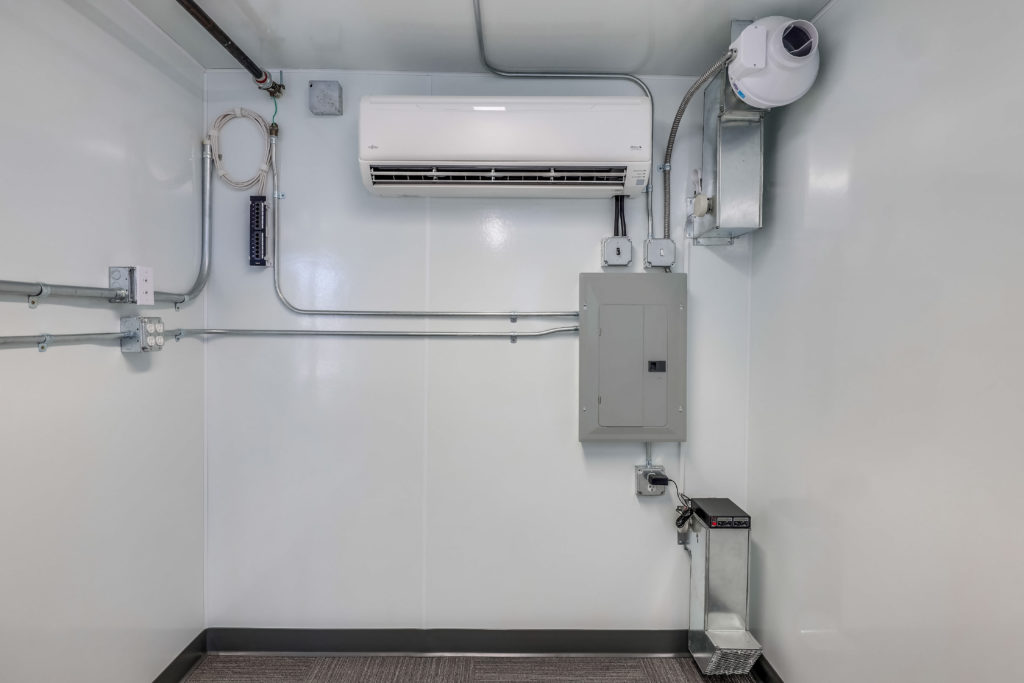What does the Tech Spec say about penetrations in SCIFs and SAPFs?
Whenever cables, plumbing, vents or other utilities need to enter or leave a Sensitive Compartmented Information Facility, or SCIF, a vulnerability is created. These penetrations create both an acoustic and TEMPEST concern because without the proper protections in place, sound or unintentional emanations can leave the facility and be collected by outsiders.
The Requirements
In chapter 3 section G of the ICD 705 Technical Specifications, known in the industry as the Tech Spec, the requirements for penetrations are laid out. However, not all the penetration requirements are clearly cut and dried. For example, the first requirement is that “all penetrations of perimeter walls shall be kept to a minimum.” There is no actual maximum requirement stated, meaning it’s ultimately up to Accrediting Official (AO) interpretation. Some AOs may be more strict and thoroughly limit the amount of penetrations while others may be more accepting of designs with a higher number as long as the designer can justify their need.

A secure space with wall mounted utilities
It’s common for a SCIF to be part of a larger facility rather than the entire building, and there are special requirements for this case. Specifically, utilities servicing other areas in the building cannot transit the SCIF without mitigations and AO approval, except for secure communication lines servicing multiple SCIFs through a shared perimeter. The AO may be more likely to approve utilities transiting the SCIF if the whole facility is owned by the same organization, such as if the facility is a CIA building with a CIA SCIF. But for facilities that share their spaces with outside organizations, the AO would likely be more hesitant to allow utilities to transit the SCIF from non-secure areas of a building. Electrical utilities specifically need to enter the SCIF at one point.
All utilities need to be surface-mounted on the walls rather than run through the walls. This prevents gaps being created in the acoustic filling that could compromise the walls’ acoustic performance.
Penetration Mitigations
The Tech Spec requires a number of mitigations for vent or duct openings. If the opening is more than 96 square inches, security bars or grilles are required, though bars are far more common. The bars need to be at least ½” thick and welded vertically and horizontally at a spacing of six inches on center.
They will likely also require acoustic protections such as sound baffles and TEMPEST protections such as wave guides. If the sound baffles or wave guides are less than six inches apart, bars or grilles aren’t required. If the opening requires bars, grilles or sound baffles, it will also require an inspection port to allow access for future inspections, which may be installed outside the SCIF perimeter if the area is controlled at the secret level and the AO approves the port location.
Pipes will need to be grounded or have a non-conductive break in order to prevent emanations from traveling along them and exiting the facility. Any penetrations will need to be fully sealed with acoustic sealant to make sure no sound escapes the facility.
Best Practices
If you suspect the facility may need further penetrations in the future, the Tech Spec does allow for you to create a penetration as long as it is filled with acoustic sealant and capped. If you suspect the facility will need to add more workstations in another year, for example, you can create and fill the penetrations, as it’s more affordable to add them during initial construction and fill them than to try and create entirely new penetrations later on.
Your designers will need to make every effort to consider the pathways of all utilities through the secure space. In typical construction, they would typically try to create more efficient routes with multiple penetrations, but in a secure space, it’s not uncommon for utilities to traverse the entire space before exiting as a means of minimizing penetrations.
A typical issue with penetrations is they may allow sound to escape. Contractors may not seal the penetration completely, so double check that any penetrations are completely sealed. If unintended emanations are escaping through the penetration, you may need to ground the pipe or add more RF foil.
Remember, the interpretation of the Tech Spec requirements is always up to the AO. If they make a call you disagree with, it’s usually best to go along with what they want rather than try to fight them on it as long as what they want can be reasonably done. A better relationship with your AO will make the entire construction and accreditation process easier.
If you’re working on a SCIF or SAPF and are wishing you had an expert to guide you through the process, Adamo can help. Our consultants can help with your project from pre-design through to accreditation. We have a 100% accreditation rate on our more than 1,000 projects we’ve constructed or consulted on, so you can trust us to make sure your project reaches accreditation.




